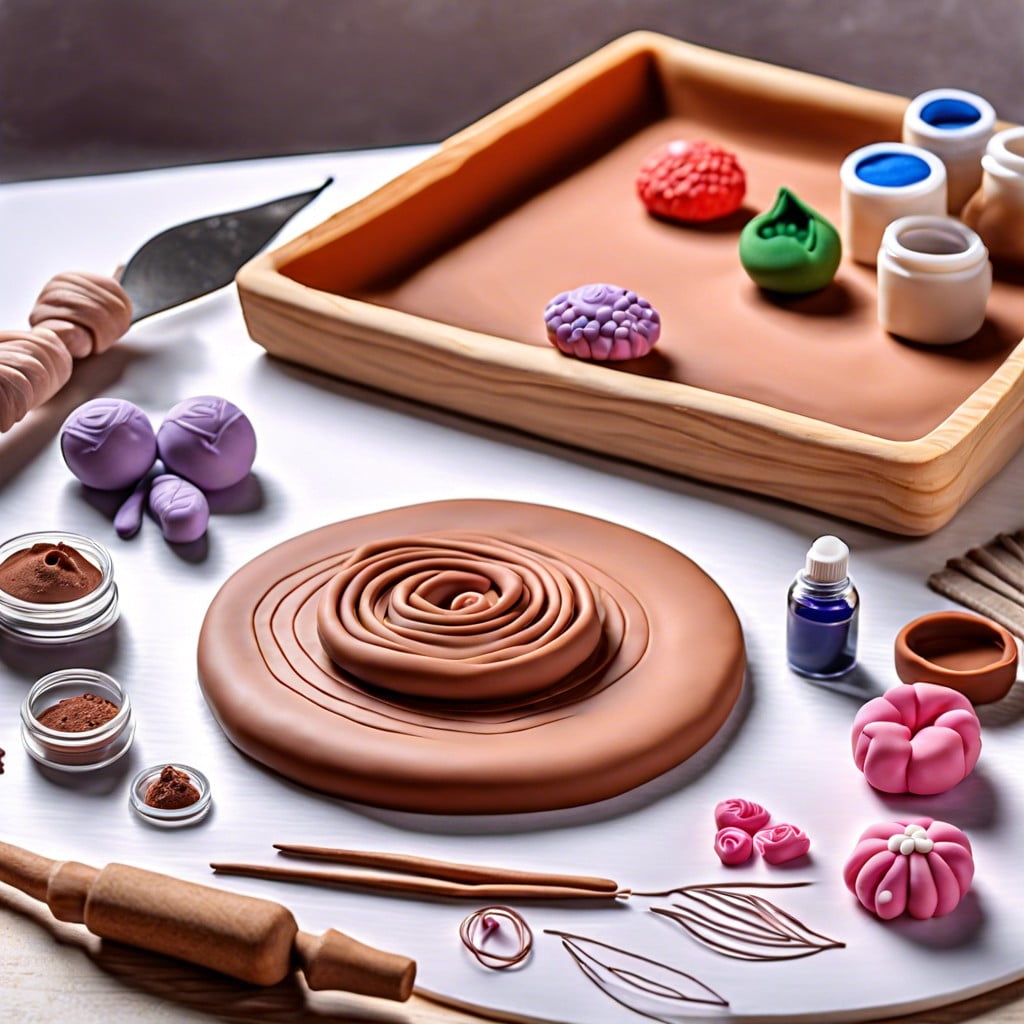Learn the proper techniques for baking polymer clay to ensure your creations are durable and well-crafted.
Key takeaways:
- Baking polymer clay creates durable and detailed creations.
- Follow these steps: preheat oven, use parchment paper, check temperature, cover with foil, bake for recommended time, let cool.
- Optimal baking temperature is 265°F to 275°F (129°C to 135°C).
- Thickness determines baking time: 15-30 minutes per 1/4 inch (6mm).
- Use an oven thermometer, distribute heat evenly, and turn tray halfway.
Why Do You Need to Bake Polymer Clay?

Baking transforms polymer clay from its pliable, workable state to a hardened, durable finish. This change occurs as the heat stimulates a chemical process known as polymerization, causing the molecules within the clay to bind together. The result of this is a solidified, sculpted piece that maintains its shape and can withstand handling, wear, and sometimes even water exposure.
This process ensures your creations can be used for practical applications, like jewelry, home decor, or even structural models, without losing their form or intricate details due to softening or deformation. Additionally, once cured, polymer clay can be further embellished with paints, glazes, and varnishes to enhance its appearance and longevity.
How Do You Bake Polymer Clay?
Before baking your polymer clay, ensure it’s properly conditioned and molded into your desired shape.
1. Preheat your oven to the manufacturer’s recommended temperature—often around 265°F (129°C) to 275°F (135°C).
2. Place your clay creation on a baking sheet lined with parchment paper. This prevents sticking and protects the clay’s color and texture.
3. If possible, use an oven thermometer to check the accuracy of your oven’s temperature, as fluctuations can affect the final result.
4. Cover your piece with aluminum foil or a baking tent to prevent scorching, especially for intricate designs or lighter colors.
5. Bake for the recommended time, usually 15-30 minutes per 1/4 inch (6mm) of thickness.
6. After baking, let the piece cool on the baking sheet before handling it to avoid deformation. The clay will harden as it cools and reaches room temperature.
Best Temperature to Bake Polymer Clay
Understanding the optimal temperature for baking polymer clay is crucial to achieve desired results without burning or under-curing your creation. Each brand of polymer clay has its own specific baking instructions, typically found on the packaging. On average, the recommended baking temperature is between 265°F and 275°F (129°C to 135°C).
Here are key points to ensure proper baking:
- Check the Package: Always refer to the manufacturer’s instructions for the precise temperature.
- Use an Oven Thermometer: Ovens can be inaccurate; using an oven thermometer ensures the correct temperature.
- Preheat Your Oven: Allow your oven to reach the desired temperature before placing your piece inside.
- Positioning: Place your clay piece in the center of the oven where it sees even heat.
- Protect Your Clay: Tenting your piece with aluminum foil can prevent scorching from the oven’s elements.
By adhering to these guidelines, you’ll be well on your way to successfully baking your polymer clay creations.
How Long to Bake Polymer Clay
The thickness of your project will determine the baking duration. As a rule of thumb, for every 1/4 inch (6mm) thickness, you should bake for 15-30 minutes. Thin items may only require 15 minutes, whereas thicker pieces could need the full 30 minutes, or possibly longer for very bulky creations. Always check the manufacturer’s recommendations on the packaging, as different polymer clays might require slight variations in time.
To ensure even baking, consider these tips:
- Use an oven thermometer to check the temperature.
- Place your clay work on a ceramic tile or parchment paper for even heat distribution.
- If baking multiple pieces at once, ensure they do not touch.
- Turn the tray halfway through the baking time for uniform curing.
Adequate baking solidifies the piece, ensuring durability. Underbaked clay will be brittle, so it’s better to err on the side of slightly overbaking rather than underbaking, within the prescribed temperature range. Remember, patience is key for a successful outcome!
Recap




